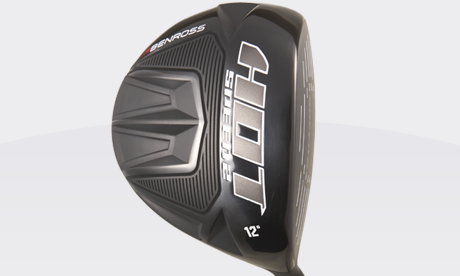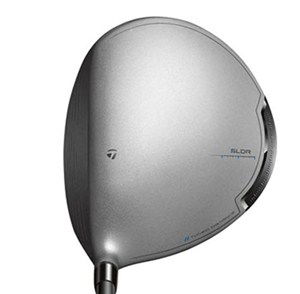PING G30 Driver Review: Turbulators are a revelation
The excellent PING G30 driver's turbulators reduce aerodynamic drag, creating more speed when you strike the ball.

The PING G30 driver, as used for the first time by last week's Greenbrier Classic champion Angel Cabrera, uses turbulators that aid one of the strongest ball flights I've seen in a golf driver.
Now I'm going to be honest with you. If you were going to tell me a brand was going to stick patented turbulators on the crown of its new driver at the start of the year, PING wouldn't have been the first name to slip of my tongue.
But they have and after an hour's testing session at the stunning St Leon-Rot Golf Club, I'm rather glad they did.
All you need to know: Best Golf Drivers
PING G30 driver - Key Features
Before I let loose on the performance benefits of the G30 driver, it's only right I begin by starting on the looks - which actually become a performance enhancement.
According to PING's senior design engineer Marty Jertson, the G30 driver's patented Turbulator Technology reduces aerodynamic drag by significantly delaying airflow separation, maintaining attached airflow around the clubhead as it approaches impact, leading to more speed.
Essentially, the 460cc G30 head has the aerodynamics of a driver that measures 100cc smaller. From what I was informed through PING's internal testing, average golfers received 0.7mph extra clubhead speed compared to the company's previous G25 driver.
"What happens with driver design when the centre of gravity is low and back, the airflow on the downswing comes up over the crown and it would normally separate and cause a wake behind the club, acting as a vacuum and slow it down," said Jertson.
"The turbulators act as a phenomena keeping air flow attached to the crown, reducing the drag coefficient for longer drives."
During PING staffer testing, two-time Masters champion Bubba Watson added an extra 2mph clubhead speed and extra 4mph ball speed.
During my testing, I added 1mph extra clubhead speed (98mph) and 4mph ball speed (147mph) on the G25. Maybe small numbers but big in the context of things.
PING G30 driver - Looks and Feel
Another nice touch of the 'turbulators' is alignment because the six ridges frame the ball superbly, and the traditional PING matte black crown will also continue to suit those PING loyalists.
For me, the 'turbulator' design carries much more shelf appeal than any previous PING driver I've had the pleasure of teeing up with and the bright, blue accent colour on the sole and neat headcover also adds to that point.
This is one neat driver. Yes it looks a little wacky, but after closer inspection and testing, it's easy to see the performance benefits behind this piece of clever engineering.
When it comes to sound, the G30 is one of the nicest sounding drivers on the market today. Okay, more of a personal preference, but I found it much more robust than the previous G25 and it offered me great feedback at impact.
PING G30 driver - Performance and Feel
In a completely opposing view to how TaylorMade goes about designing drivers with low, forward CG, PING prefers to place its CG low and further back. With the G30, the brand has placed CG as low and as far back than it's ever done with one of its drivers before.
PING says this ensures optimal launch conditions and even higher moment of inertia (approximately 2%) to further minimise the gear effect at impact for extreme levels of forgiveness and maximum energy transfer.For those confused about MOI, it's what controls how much gearing/twisting there is when you hit it off-centre.
Jertson explained to Golfmagic how PING has gained 4g of discretionary weight with its new titanium face material called T9S, which is much lighter and stronger than the former Ti 8-1-1 face material on the G25. Instead of using that weight to move the G30's CG lower and more forward, PING moved the G30's CG lower and more rearward.
PING says it's made its G30 driver about 150 RPM lower spinning than the G25. During my testing with 20 drives, spin was approximately 100 RPM lower than the G25 I tested last year at 2500 RPM.
The brand also claims the new G30 is around six yards longer than the G25. Given the added speed from the turbulators and the 100 RPM of lower-spin launch I attained, I saw a five-yard total distance gain of 262 yards in comparison to 257 with the G25.
Offline dispersion was down, too. I was 13 yards offline with the G25 last year during testing. This time with the G30, I'm nine yards offline.
As for the shaft the PING fitting team handed me out in Germany, I was using a stock S-flex TFC 419D in standard 45.75 on a 10.5-degree G30 and was sending my drives to a launch of 13.1-degree. That's just 0.4-degree down on the launch angle of my current driver, so I'm more than happy with that.
What I enjoyed about the standard TFC 419D shaft was its overall balance at address and through impact. The shaft features a high balance point technology where the CG is closer to the grip end. I found this presented me with a heavier head and increased the MOI, contributing to the low CG. With all that in place, it's easier to see why there's much more energy, momentum and inertia for greater distance with accuracy when it comes to the G30 over G25.
Adjustability-wise, the G30 comes with an adjustable hosel that has the same mass and outer diameter as fixed hosels, providing benefits on adjustability with no sacrifice in performance - that's a big phrase for PING when it comes to the G30. To optimise launch angle and spin, golfers can add or subtract up to 1-degree of loft using Trajectory Tuning+ Technology.
On top of the standard G30 driver, PING has also launched a G30 SF Tec driver which helps promote a right-to-left ball flight for players whose shots typically end up right of the target. From a quick testing session with the SF Tec, I found weight was positioned nearer the heel to help square the face at impact. It has a lighter swingweight (D1 instead of D3 in the standard) and that aided me with a nice draw shape.
Of the two, I much rather favoured the performance and feel of the standard G30.
Should you buy the PING G30 driver?
Without doubt, my favourite PING driver to date.
Love the fresh new looks of the 'turbulators' on the traditional matte black crown and giant PING logo emblazoned on the sole. Neat blue accent adds to the shelf appeal, too.
Alignment and sound is up there with the best I've tested on a driver before. Standard TFC 419D shaft provided me with an ideal ball flight of 13.1-degree.
My PING G30 driver shot data (20 balls): 262 distance; 237 carry, 13.1 launch, 147 mph ball speed; 98mph clubhead speed; 1.5 smash factor; 2500 RPM spin, 9 yards offline dispersion


